TAG Heuer Monaco: downright mythical
This weekend, the stars of the Formula 1 TAG Heuer Monaco Grand Prix 2025 weren't just the F1 cars and their drivers, but the new TAG Heuer Monaco watches unveiled for the event. Frank Sans C was there and joined the roaring fervor of this legendary and glamorous race. It was also an opportunity to look back at the history of this iconic watch, dedicated to the American actor Steve McQueen.
The odyssey of the “Monaco” is punctuated by fortuitous events and significant encounters. In 1969, Jack Heuer, then CEO of the Heuer brand, met Jo Siffert, a fiery Swiss driver. The 32-year-old young man had just won the British Grand Prix. Jack Heuer met him and signed the first automotive sponsorship contract linked to watchmaking. Together, they placed the HEUER brand logo on a car—a Lotus—and on the driver’s racing suit. In fact, the company director had an idea in mind and wanted to use this opportunity to launch his revolutionary movement: the Chronomatic Calibre 11, the first automatic chronograph caliber in history.
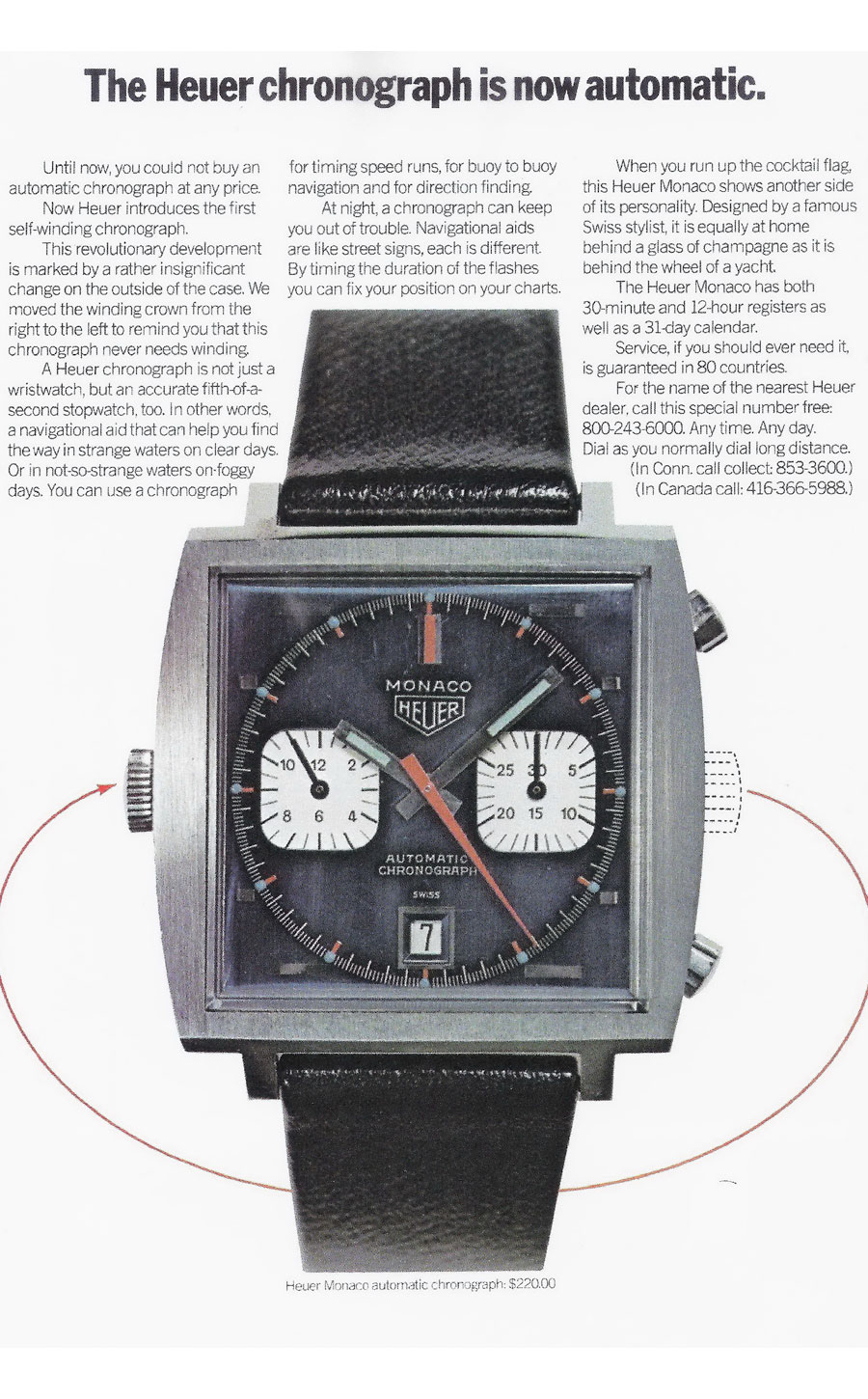
Birth of a revolutionary caliber
But Heuer is no newcomer to motorsport. Founded in 1860—and later renamed TAG Heuer in 1985—the brand, as early as 1911, was the first to mount a chronograph on a car dashboard. In 1916, it produced the first chronograph accurate to 1/100th of a second of a second, which would be used to time car races, which were becoming increasingly fast. It’s important to note that at that time, races were timed by hand.
But let’s return to the birth of this revolutionary caliber. In 1967, Jack Heuer asked if it was possible to add a Dubois-Depraz chronograph module to the Buren automatic micro-rotor caliber, a very flat movement. He was told that anything was possible, but that the production would be time-consuming and very expensive. The estimated price was so high (500,000 Swiss francs at the time – roughly 2.5 million euros today) that Mr. Heuer asked Willy Breitling, head of the Breitling family business, to join him in the adventure. Specializing in the manufacture of manual chronographs – which are wound every day – he immediately understood the value of such a technical innovation and agreed to secretly develop this mechanism with Jack Heuer.
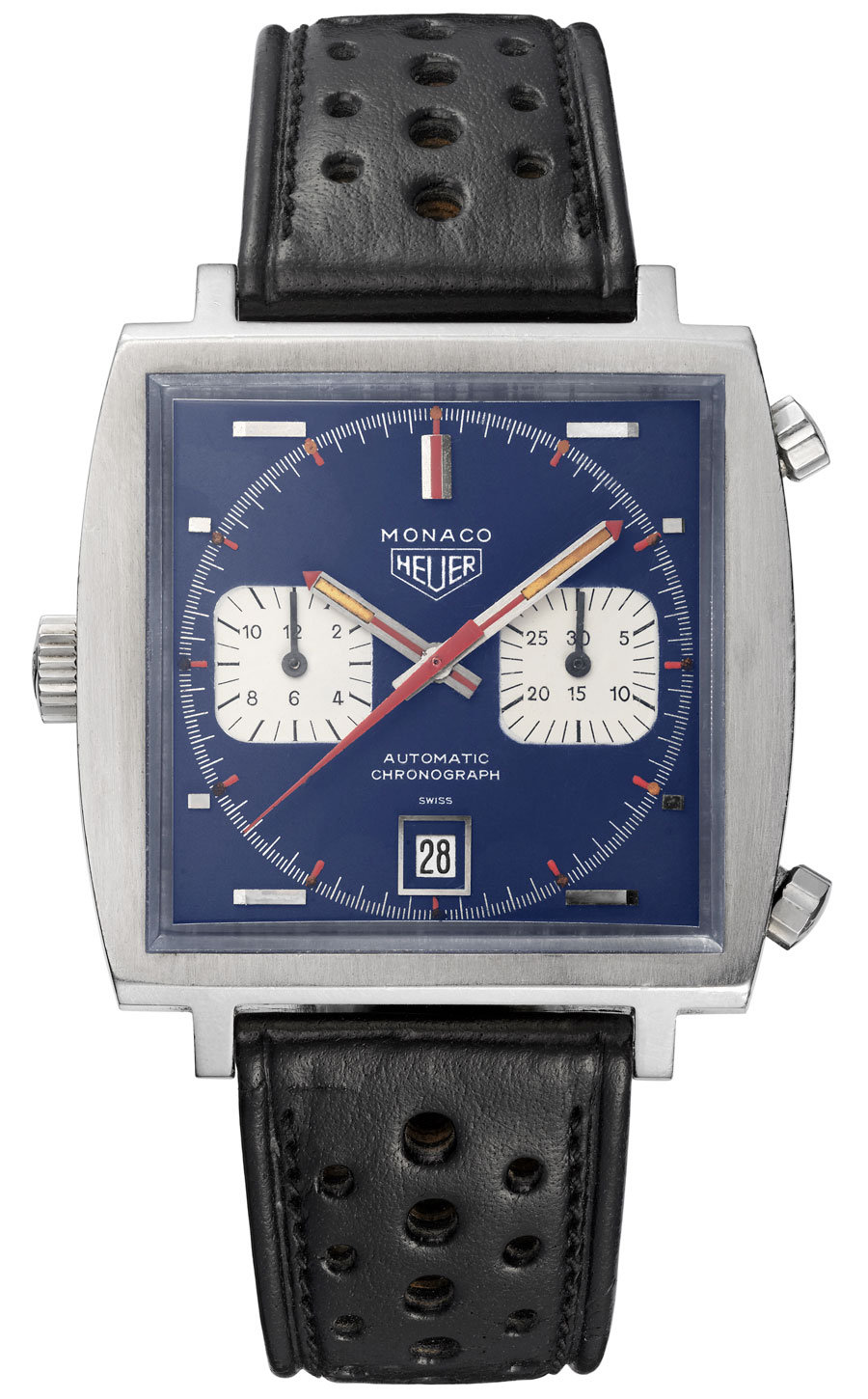
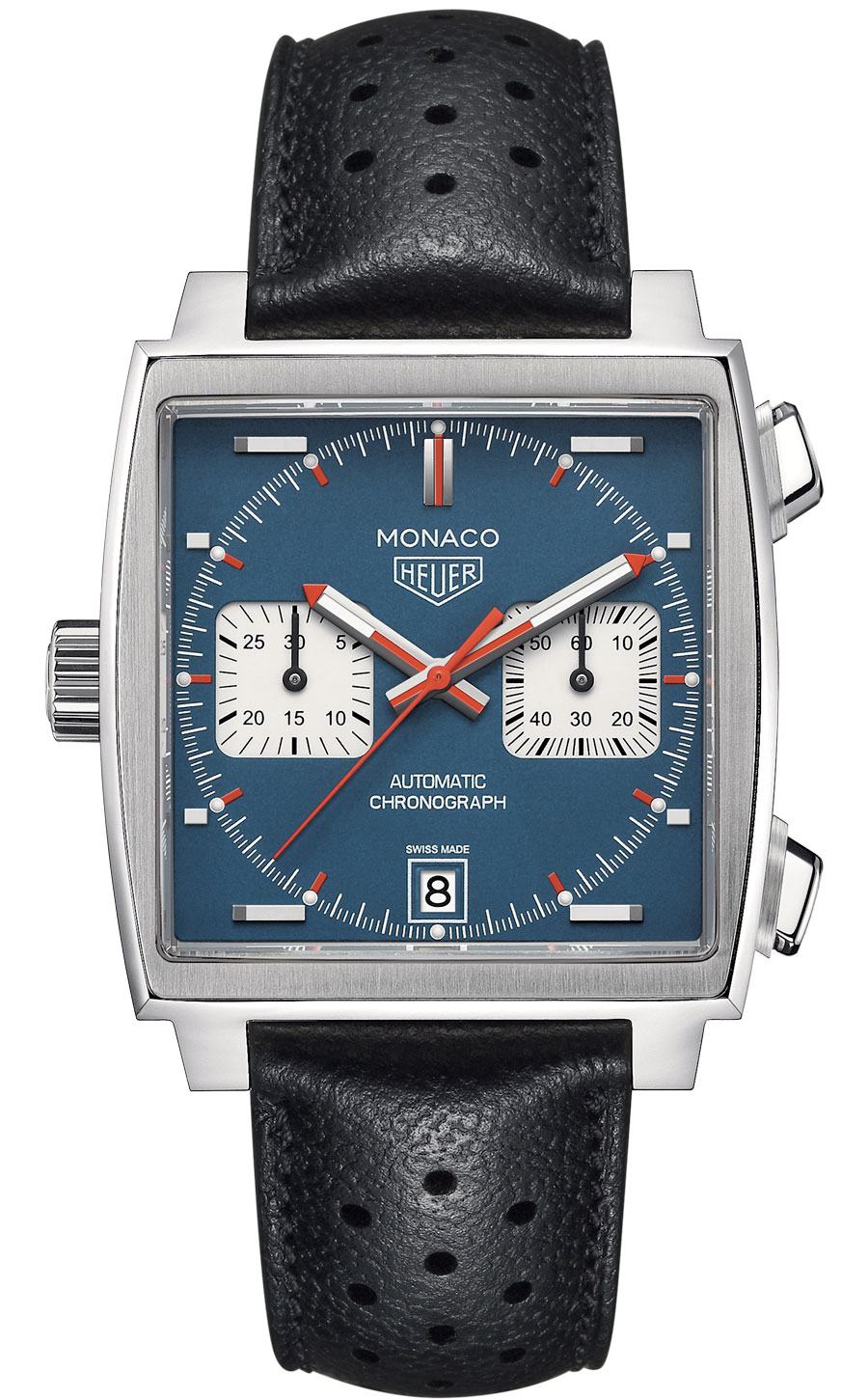
1970 model – Current collector’s item
After two years of development, the mysterious “Project 99” culminated in 1969 with the birth of the first prototype: the Chronomatic Calibre 11. This modular movement required a specific configuration, with a winding crown placed at 9 o’clock, while the two chronograph pushers remained at 2 and 4 o’clock. An unconventional arrangement in a watchmaking world still very attached to tradition. However, the placement of the crown on the left was quickly praised for its practicality. Confident in the potential of his caliber, the visionary Jack Heuer even made it a marketing argument, claiming that one could immediately recognize “the first chronograph watch that does not wind” thanks to this unique detail. And since the caliber had an atypical construction, Jack Heuer decided to take originality even further: it required an unusual case. The choice then turned to the very first “patented waterproof” square case, developed by the Piquerez company. Jack Heuer obtained the exclusive rights to use it for his chronographs. Thus was born the “Monaco”, named in homage to the most emblematic Formula 1 Grand Prix.
Consult the technical specifications of the TAG Heuer Monaco Calibre 11 – €7,950.
A genius idea?
Not so sure. Despite its innovative nature, the watch struggled to find an audience: sales stagnated and it remained largely ignored. However, in 1969, the official year of the Monaco’s release, Steve McQueen attended the 24 Hours of Le Mans, the most famous endurance race in the world.
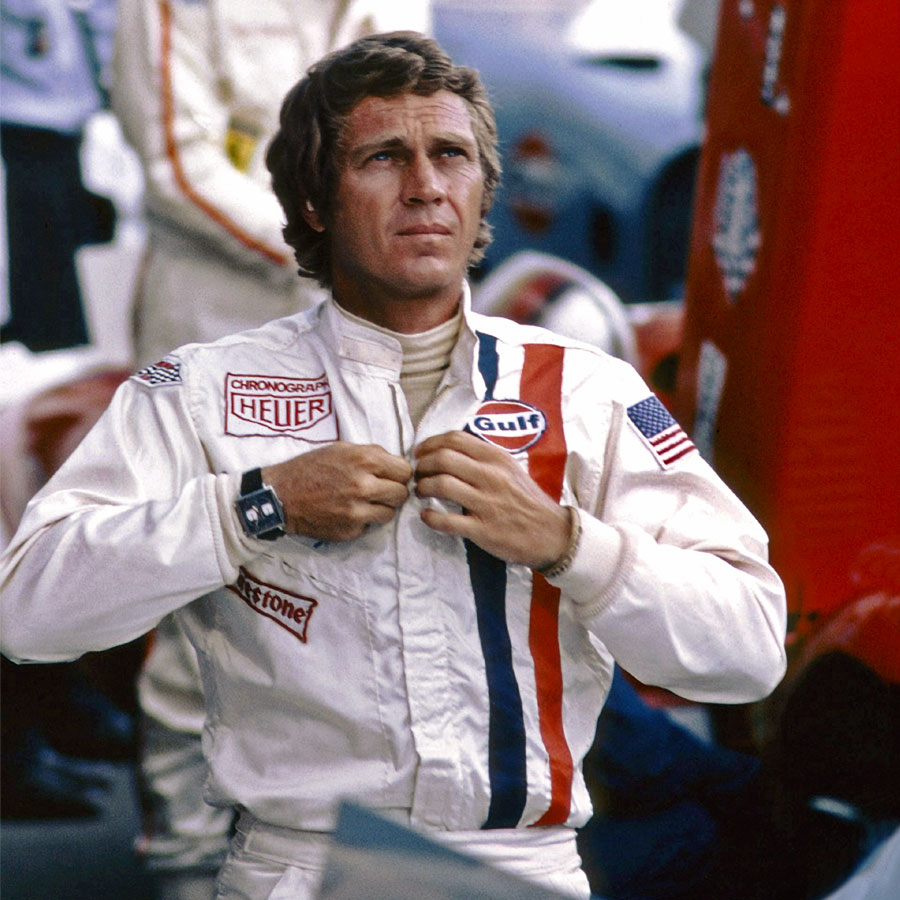
Among the drivers was Jo Siffert, competing in a Porsche 908/02 LH Spider, who proudly displayed the Heuer Chronomatic logo on his racing suit. McQueen, already involved in directing a film dedicated to this race, Le Mans, the following year, approached Siffert. He recruited him as a technical advisor, supplier of racing cars, and stunt double for dangerous scenes—some of which were filmed during the 1970 24 Hours of Le Mans. To reinforce the authenticity of his character, McQueen decided to wear the same racing suit as Siffert, and thus to highlight the Heuer logo. This choice would have a decisive influence on the watch worn on screen…
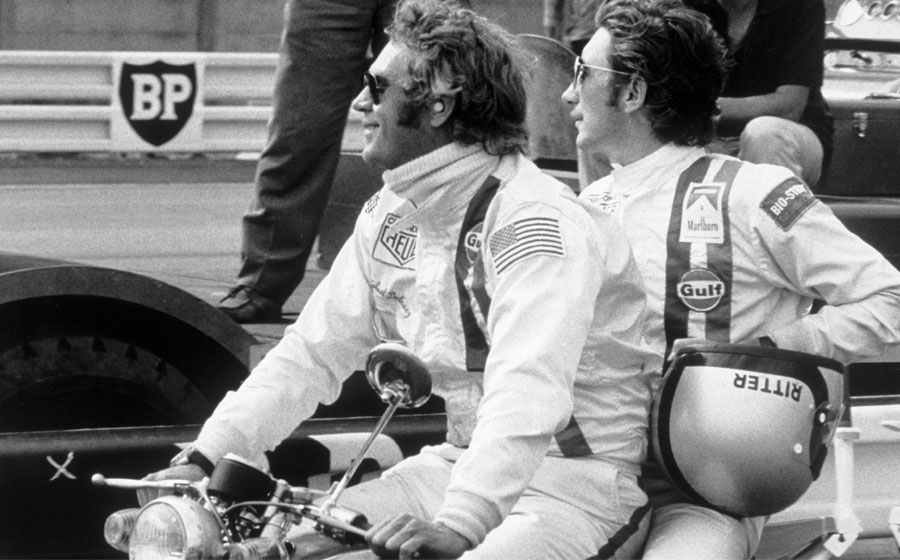
A question of accessories
Props designer Don Nunley had selected several watches from a variety of brands for the film, including Rolex, Omega, and Heuer. Steve McQueen initially chose Omega’s then-fashionable Speedmaster because it had been on the lunar surface the previous year during the Apollo 11 mission. However, it was pointed out to him that, wearing Jo Siffert’s spacesuit with the Heuer logo, a watch from another brand would have looked inconsistent. Ultimately, McQueen opted for a blue-dial Monaco. Like the watch, the film was not as successful as he had hoped. Yet today, both have become legendary icons.

The latest TAG Heuer Monaco novelties
TAG Heuer Monaco Chronograph x Gulf
Limited to 971 pieces in homage to the film Le Mans released in 1971, the TAG Heuer Monaco Chronograph x Gulf watch takes up the aesthetic and technical codes of the original Monaco, as well as the distinctive colors of the Gulf suit, reminiscent of the one worn by Jo Siffert on the circuits.
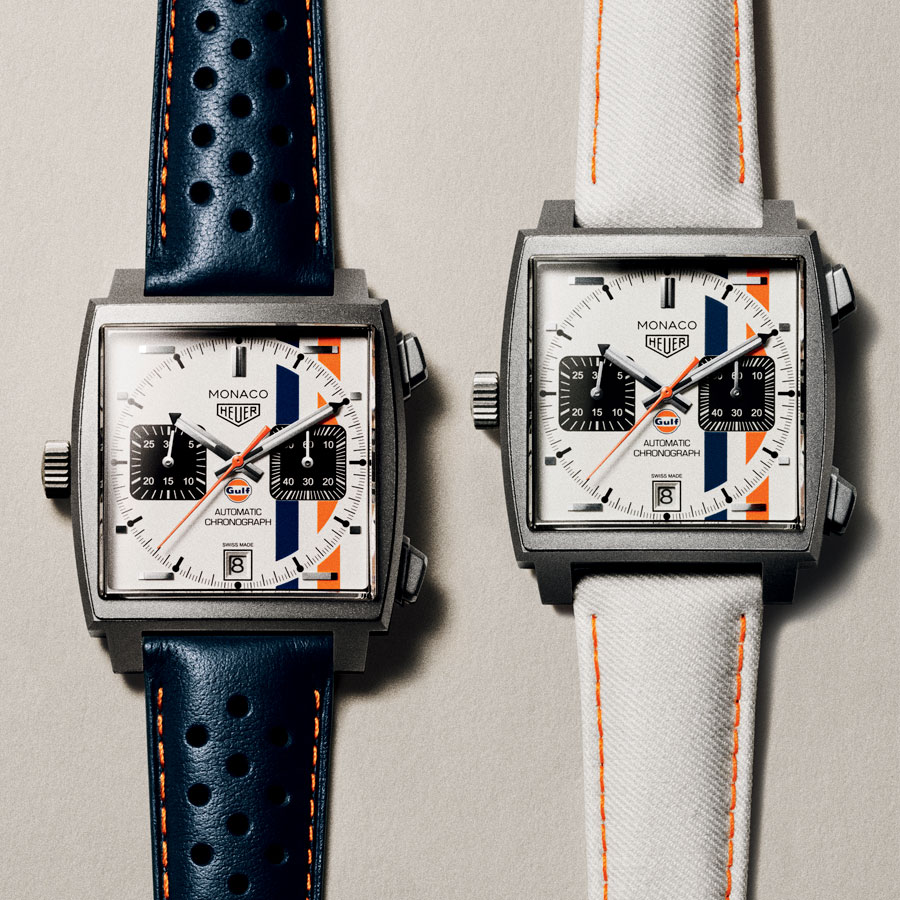
On the mechanical side, the instrument beats to the rhythm of the Caliber 11 and features the iconic crown on the left. Measuring 39 mm on each side, the brushed case in grade 2 sandblasted titanium houses a silver-grained dial adorned with Gulf’s signature blue and orange bands. It is also punctuated by two black opaline counters, at 3 o’clock and 9 o’clock, corresponding respectively to the seconds indicator and the minute chronograph.
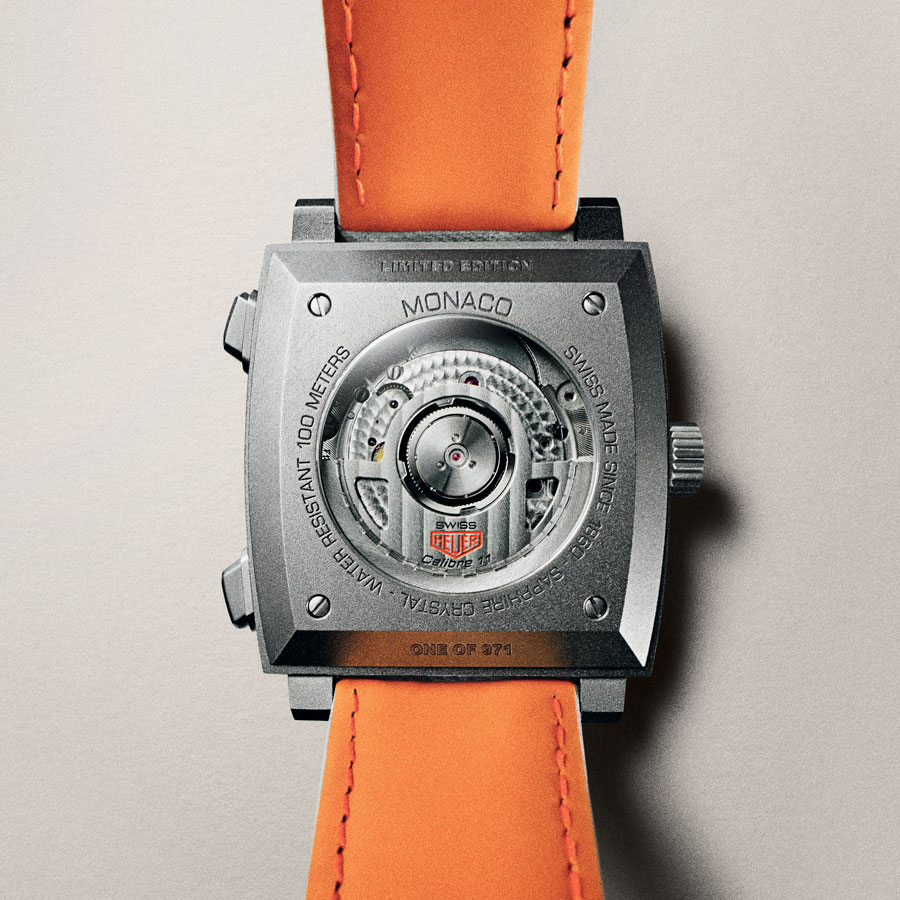
The final nod to its origins: the white strap. It is made of Nomex® fabric, a flame-retardant material used for professional pilots’ suits.
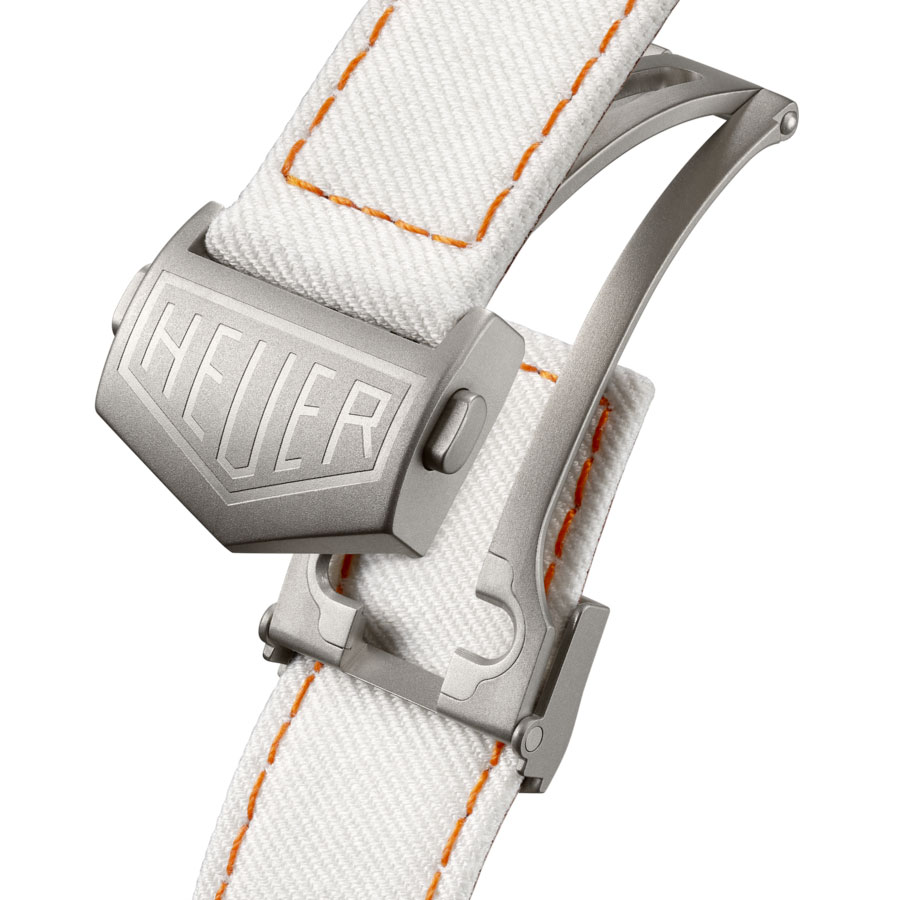
This connection goes beyond the simple quest for authenticity, as this particular Nomex® fabric comes from Hinchman, a small American manufacturer that supplied the suits worn during the filming of the 1970 movie Le Mans, including Steve McQueen’s.
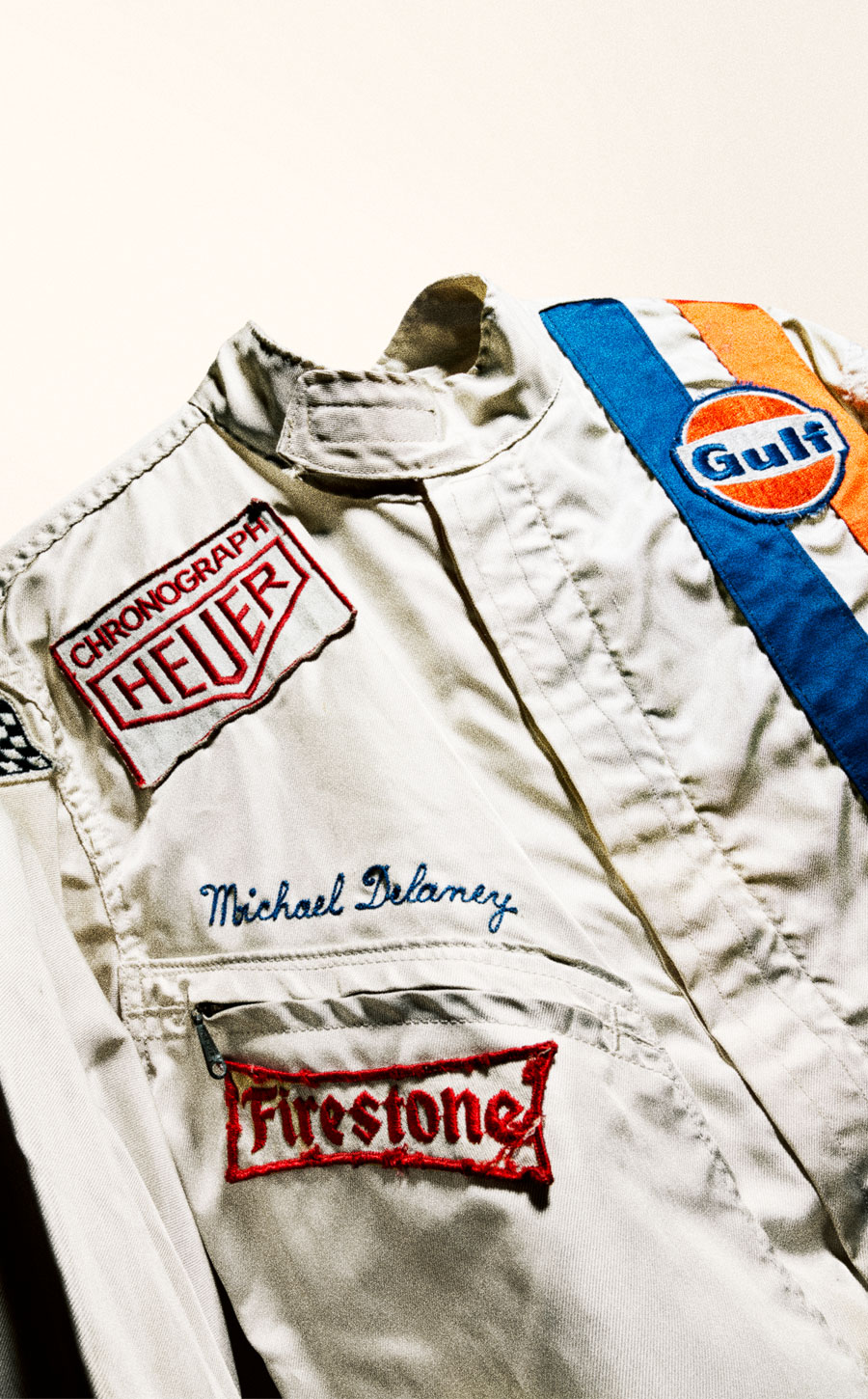
€9 400
Consulter la fiche technique de la TAG Heuer Monaco Chronograph x Gulf.
TAG Heuer Monaco Chronograph Stopwatch
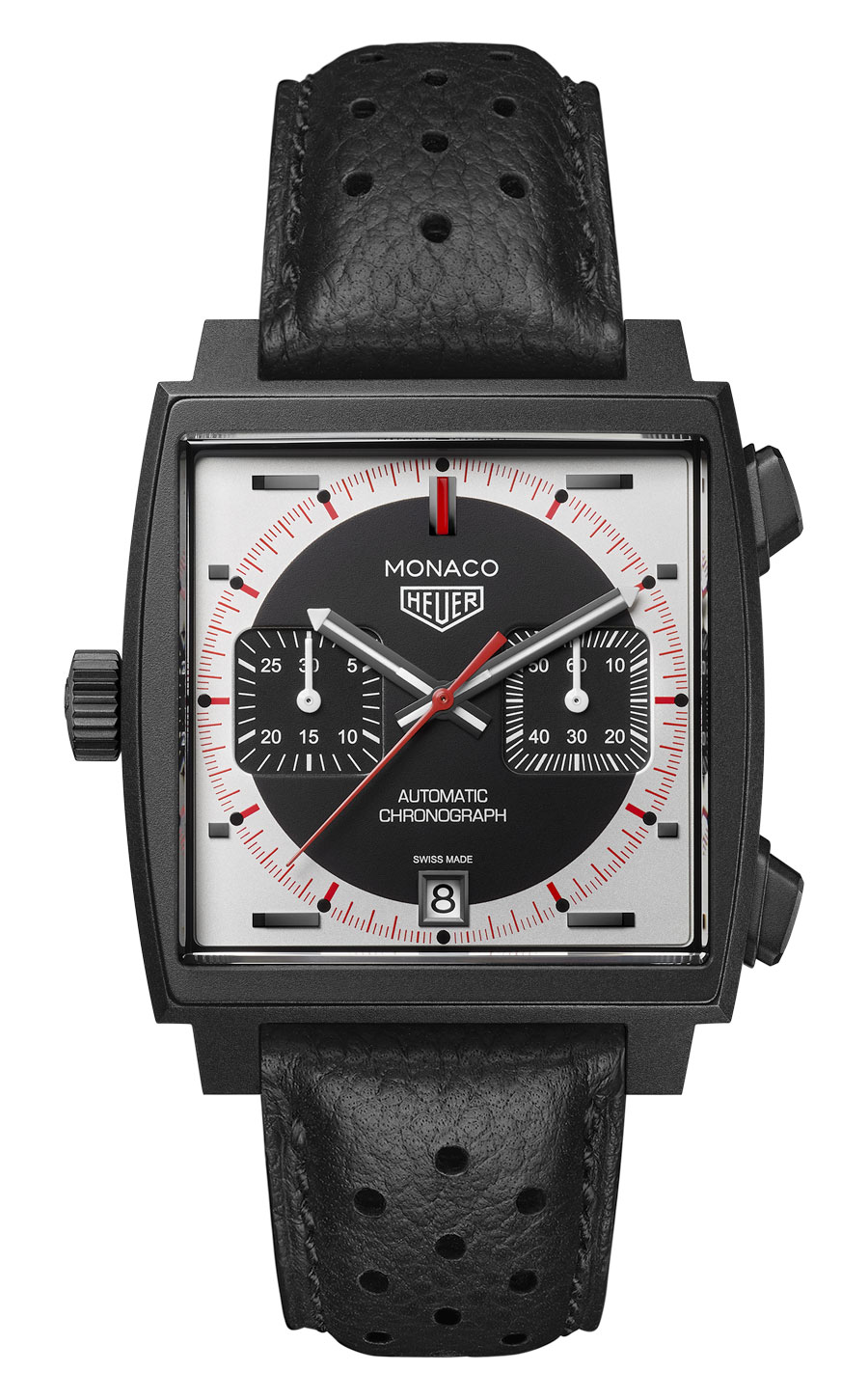
To commemorate the fact that TAG Heuer is now the first title partner in the history of the Formula 1 Monaco Grand Prix, this reference, also limited to 970 pieces, is inspired by vintage Heuer chronometers, of which it takes up the significant colors combining black, white and red.
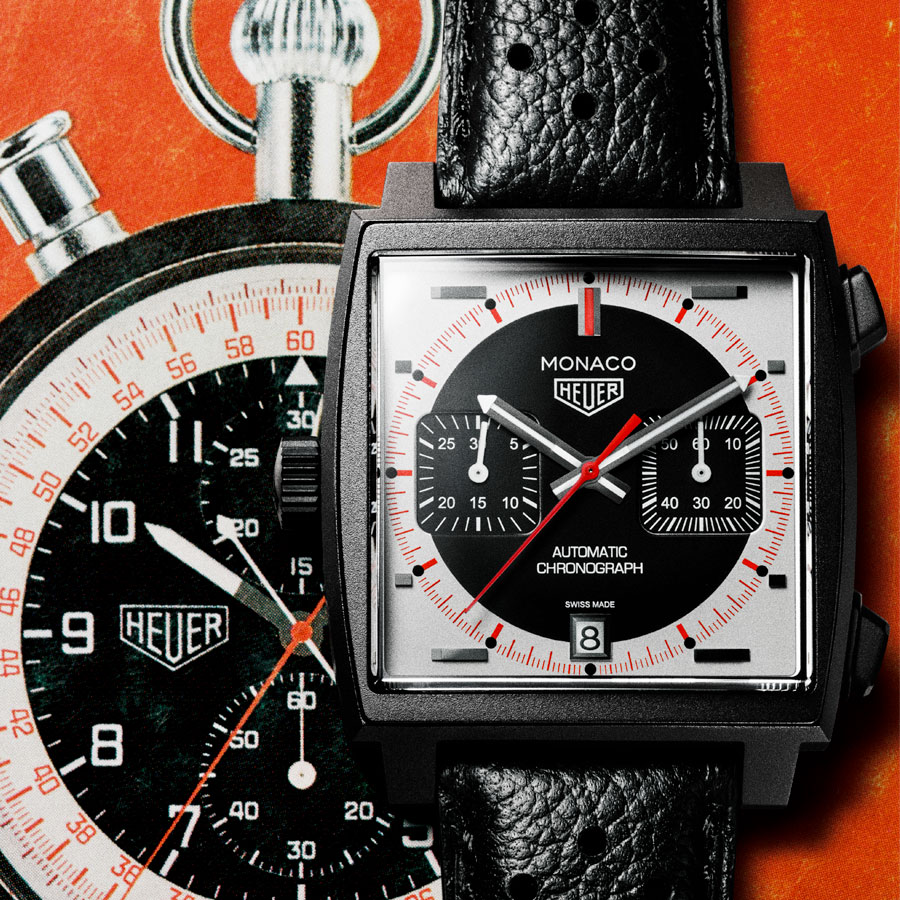
Reminiscent of a timekeeping instrument, the dial features a black circle on a silver opaline background. To accentuate the already present contrast, a minute track appears in red to improve readability. Paired with a perforated calfskin strap, the case—waterproof to 100 meters—is machined from grade 2 titanium with a black DLC (Diamond-Like Carbon) coating.
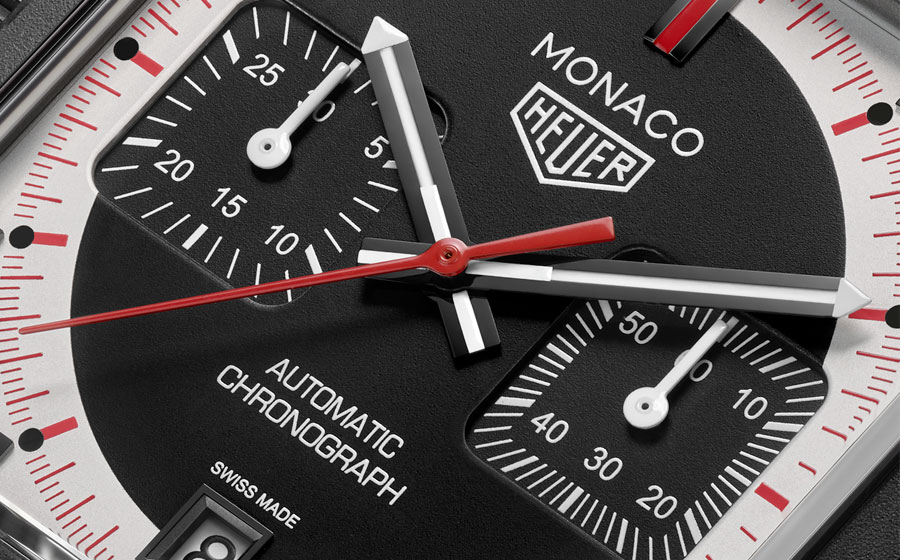
€9,650
Consult the technical specifications of the TAG Heuer Monaco Chronograph Stopwatch.
Consult all our TAG Heuer Monaco watch specifications.
See also:
Read also: